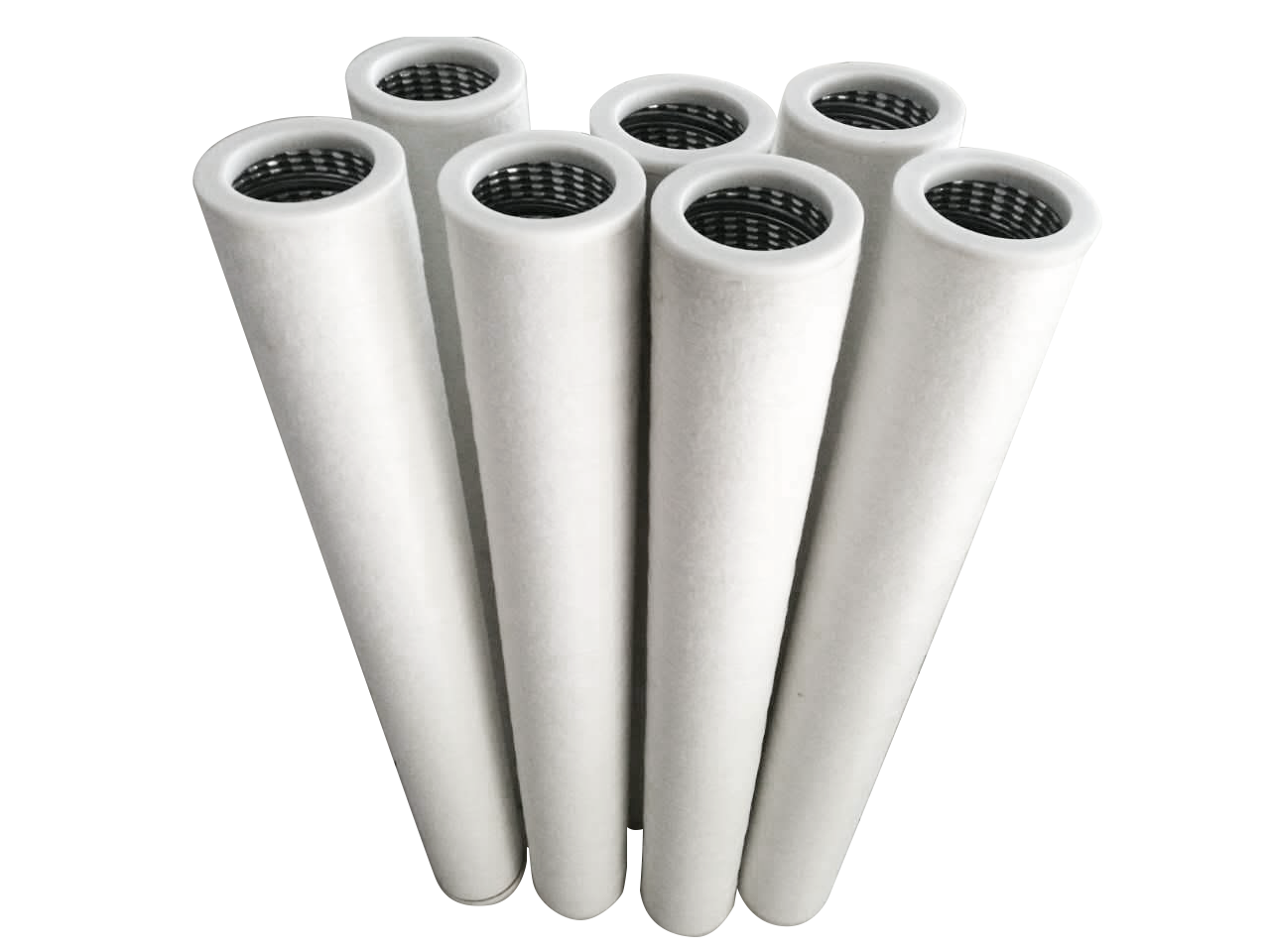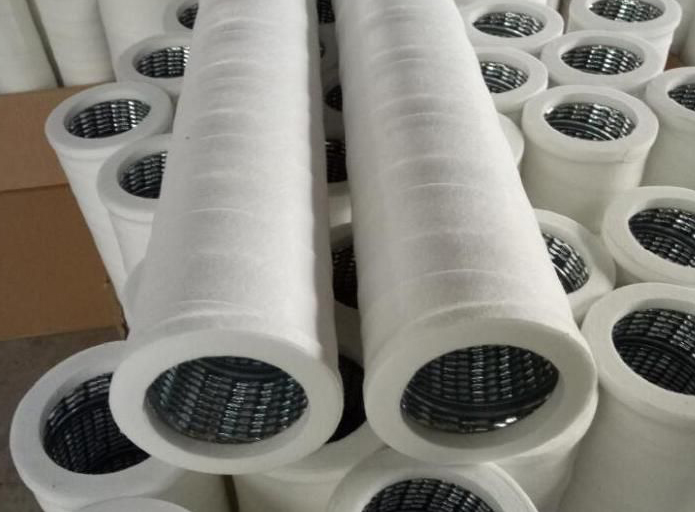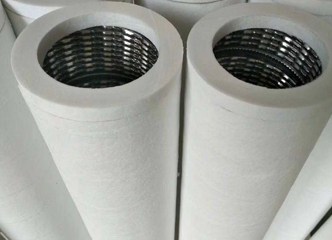Introduction:
Gas filtration systems, a crucial division of industrial filtration, have found significant applications across diverse industrial sectors. Ranging from helping maintain the quality of natural gas to preventing damage to vital equipment or machinery, gas filters play a pivotal role. These systems have evolved tremendously over the years to accommodate various working conditions, adding substantial value to a myriad of industries. A typical component that's integral to these systems is the gas filter element – the heart of filtration.
The Gas Filter Element – A Necessary Gas Purification Accessory:
Gas filter elements are vital constituents for gas collection stations, compressor stations, offload stations, pigging stations, terminal stations, and a variety of application areas in natural gas gathering, transmission pipelines, and gas transmission pipelines. They're responsible for effectively filtering out dirt within the pipeline and debris from the pipe walls. This aids in maintaining the integrity of gas transmission, equipment operation, and fulfilling both pipeline transmissions and users' demands for gas quality. They accommodate use with various gases, including natural, artificial, and other non-corrosive gases. Particularly, the filter medium in these elements gets utilized for the gas-liquid and liquid-solid separation of substances like nitrogen, carbon dioxide, propane, butane, etc.

Working Principle:
Impurities arising from gas sources as well as mechanical impurities from pipelines can detrimentally affect gas transmission quality and damage metering and pressure-regulation equipment. Consequently, gas filtering systems are installed before every dispatching station or critical unit, ensuring the integrity of subsequent machinery. The filter selection directly influences the filtering effect. Considering the unique properties of gas, stainless steel metal mesh is primarily chosen to increase the filter area and secure good gas circulation. With the incorporation of an asbestos gasket, the sealing of low-temperature gases, such as compressed liquefied petroleum gas, is ensured.
Enhancing Filtration Capabilities:
Oil and gas filters possess a significant filtration area, enabling large flows and reduced equipment diameter. The high precision levels achieved by these filters result in a retention rate of over 90%, meaning a longer service life and a superior pollution interception impact. These filters are designed with a multi-layer sintered structure to improve efficiency and possess an 'internal thread' structure for added compression resistance.
Benefits of Gas Filters:
A few advantages of gas filters include large filter area, high precision, internal thread structure, material, and structure. They offer a wide range of filtration precision that caters to various application requirements. The exceptional dirt-holding capacity and the honeycomb structure make these filters highly efficient and reliable. The possibility of washing, regenerating, and large flux pave the way for economic benefits and versatile chemical compatibility.
Technical specifications include a name for the natural gas filter element, maximum operating temperature of 115℃, sealing torque of 6.9~13.8 N-M, and filter precision 1,5,10 (SCW = 0.3). The filter element replacement pressure drop ranges from 0.08 - 0.1MPa, not exceeding 0.17 MPa.
Conclusion:
Gas filters are fundamental owing to their high filtration area, precision, strengthened compression resistance, and versatility across industries. From pharmaceuticals, food to electronics and petroleum and chemical industries, gas filters are indispensable in maintaining optimum operational conditions and product quality. As we continually anticipate advancements in this technical field, we strive to meet the specific, ever-changing needs of our industrial clientele. The refined design, impressive capability, broad adaptability, and compelling benefits of modern gas filters underscore their relevance in diverse industry sectors.
The field of gas filtration technology has seen continuous enhancements and developments over the years, fundamentally revolutionizing its applications across various industries. Here are some of the key advancements in gas filter technology that have improved filtration efficiency:
Synthetic and Micro-glass Formulations: In the realm of fuel filtration, modern filters have started utilizing advanced media formulations primarily comprising synthetics and micro-glass. These materials offer superior filtration performance and durability compared to traditional filter materials, enabling more effective and reliable filtration.
Development of Specialty Filters for Specific Industries: Industries like the semiconductor industry have seen a rise in specialized gas filters designed to cater to their unique requirements. The refinement of filter technology specific to these industries has greatly enhanced filtration efficacy and purity levels of the gases used.
Advancements in Exhaust Gas Filter Technologies: In the automotive industry, innovative exhaust gas filter technologies such as wall-flow Diesel Particulate Filters (DPFs), closed coupled DPFs, and Selective Catalytic Reduction (SCR) systems have evolved. These technologies have significantly improved the filtration of exhaust gases in vehicles, contributing to reduced air pollution.
Hot Gas Filtration: The development of advanced coal-based power generation techniques brought with it the evolution of hot gas filters. This technology greatly impacted the ability to filter gases at higher temperatures, offering efficient filtration solutions in energy production.
Use of Eco-Friendly Filter Media: Sustainable practices have found their way into filter technology with manufacturers tapping into eco-friendly filter media. The aim here is to balance efficient filtration practices with environmentally-friendly processes, creating a win-win situation for both the industry and the environment.
Improved Filtration in Miniaturized Devices: The constant miniaturization of electronic devices has resulted in significant advancements in mechanical filtration. As components become smaller, the necessity for precise and efficient filtration likewise increases.
Multi-Layer Sintering Technology: This has significantly improved filtration efficiency by delivering high precision and large filtering areas.

These advancements underline the progressive nature of gas filter technologies and ensure that whatever the application or industry, there are effective, efficient, and environmentally sustainable options available.
Wall-flow Diesel Particulate Filters (DPFs) and Selective Catalytic Reduction (SCR) systems have drastically improved the filtration of exhaust gases in vehicles, playing an integral role in minimizing air pollution. Here's how they work:
Wall-Flow Diesel Particulate Filters (DPFs):
DPFs are a crucial part of the emission control system on diesel vehicles. They are ceramic filters designed to capture diesel particulate matter or soot produced in exhaust gases. The unique wall-flow design allows exhaust gases to pass through an intricate web of channels: the ends of each channel are alternately plugged forcing the gas flow through the channel walls where particulates are captured. The trapped soot particles then get subjected to 'regeneration'— burnt off at high temperatures to leave only a small residual ash. This results in a cleaner exhaust output, reducing the harmful particulate emissions from diesel engines.
Selective Catalytic Reduction (SCR) Systems:
SCR systems are used to reduce the levels of nitrogen oxide (NOx), a harmful pollutant emitted by diesel engines. The SCR process involves injecting a liquid reductant, usually a solution of urea in water, into exhaust gases. This reacts with NOx over a catalyst and converts it into nitrogen (N2) and water (H2O), both harmless and naturally occurring in the atmosphere. The SCR system can achieve NOx reductions over 90%.
Together, these systems enhance overall exhaust filtration, bringing forth notable improvements in air quality and significantly reducing the environmental impact of diesel vehicles. With these technologies, the automotive industry has stepped forward in meeting demanding emission standards, preserving the environment, and ensuring safer, cleaner air for everyone.
The wall-flow Diesel Particulate Filters (DPFs) are meticulously designed to reduce the amount of harmful particulate matter emitted by diesel engines. This process is executed through an intricate working mechanism integrated within the DPF.
The DPF is essentially a ceramic filter, generally made of cordierite or silicon carbide, with a honeycomb structure. This structure consists of numerous parallel channels passing through the entire block of the filter. Each channel is blocked at one end - so a given channel is open at the front end but closed at the back end, its neighboring channel would be closed at the front end but open at the back end.
Once the diesel exhaust gases enter the DPF, they are forced to permeate through the porous walls of the filter because the ends of the channels are alternatingly blocked. As a result, the gases need to flow through these walls to find an exit path, leading to the higher surface area filters, effectively capturing the soot or diesel particulate matter.
Once the soot is trapped in the filter, it gets subjected to a process called 'regeneration.' In this process, the trapped soot is burnt off at high temperatures, which are usually sensed and controlled by the vehicle's engine control unit (ECU) to ensure optimal performance and lifetime of the DPF. The trapped soot is burnt and converted to a much smaller volume of ash, effectively reducing the emissions from the exhaust gases.
Through this innovative design and working mechanism, wall-flow DPFs play a crucial role in maintaining a cleaner and healthier environment by substantially reducing the particulate matter outputs from diesel engines.
The Engine Control Unit (ECU) plays a crucial role in managing the regeneration process in Diesel Particulate Filters (DPFs) for several reasons:
Maintaining Optimal Filter Efficiency: The ECU ensures that the DPF operates at maximum efficiency by managing when and how the regeneration process occurs. If the regeneration process is not properly managed, the filter might get clogged with soot, significantly reducing its performance and potentially causing damage.
Fuel Efficiency: The regeneration process requires additional fuel to increase the exhaust gas temperature. The ECU effectively manages this process, ensuring that the regeneration is completed in the most fuel-efficient way possible. It does this by initiating the regeneration process mostly during periods of sustained high-speed operation, where the engine is running at higher temperatures and the extra fuel usage has less of an impact on overall fuel economy.
Engine Performance: Particulate buildup can impact the engine's performance over time. The ECU monitors the amount of particulates in the DPF and triggers regeneration when needed, ensuring that the engine operates at its best performance level.
Preventing Filter Damage: If the DPF becomes too full and is not regenerated in time, it can lead to filter damage. The ECU helps prevent this by monitoring soot levels and initiating the regeneration process when necessary.
Longevity of the DPF: Accurate control of the regeneration process by the ECU ensures that the DPF lasts for a long time and doesn't need to be replaced frequently. This can have significant economic benefits.
In summary, the ECU's control of the regeneration process in DPFs is essential to keep engines running smoothly and efficiently, protect the filter from damage, and ensure the longevity of the DPF, all while maintaining optimal fuel economy.
The Engine Control Unit (ECU) monitors several parameters in order to accurately determine when to initiate the regeneration process in Diesel Particulate Filters (DPFs). Here's a run-down of those parameters:
Differential Pressure: Most modern systems measure the difference in pressure before and after the DPF, also known as differential pressure. As soot accumulates within the DPF, the exhaust gasses have a tough time getting through, and the differential pressure rises. The ECU uses this differential pressure value as a primary indicator of when it’s time for a regeneration cycle to start.
Exhaust Gas Temperature: Regeneration involves burning off the accumulated soot in the DPF at high temperatures, typically around 600 degrees Celsius or more. The ECU often waits for situations where the exhaust gas temperature is naturally high such as during highway driving before initiating regeneration.
Mileage and Fuel Consumption: The ECU also takes into account the number of miles driven and the amount of fuel consumed. These indirect measures help estimate soot accumulation in the DPF – as the more the vehicle is driven and the more fuel it consumes, the more soot the engine is likely to produce.
Time Since Last Regeneration: The ECU also keeps track of the time elapsed since the last regeneration process. After a certain threshold, it automatically initiates a new regeneration.
Soot Load Modeling: Some ECUs utilize advanced software to estimate the amount of soot in the DPF based on a variety of factors such as engine load, speed, and operation time.
After analyzing all these parameters and if needed, the ECU can control the post-combustion fuel injection or adjust the timing of the ignition to increase the exhaust temperature and start the regeneration process. The ECU's control ensures the DPF is cleared without affecting engine performance and fuel efficiency.
The Engine Control Unit (ECU) uses advanced mathematical models to estimate soot accumulation in the Diesel Particulate Filter (DPF) based on mileage and fuel consumption. These models take into account various driving conditions and engine operations to predict the amount of soot produced.
When considering mileage, generally, the longer the vehicle has been driven since the last regeneration, the more soot is likely to have built up in the DPF. This is because the process of combustion, which propels the vehicle, inherently generates soot or particulate matter.
With regard to fuel consumption, more fuel consumption typically correlates with more soot production. This is based on the principle that when more fuel is burned, the amount of particulate matter or soot produced is proportionally greater.
It's important to note that these methods give an estimation, not an exact measure of the amount of soot present in the DPF. Other factors such as engine load, engine speed, and oil consumption can significantly affect the rate of soot production and accumulation in the DPF. Therefore, these factors are also often included in the ECU’s calculations.

By constantly monitoring these parameters and using sophisticated algorithms to process the data, the ECU calculates the estimated load of soot within the DPF in real-time. Once the soot level reaches a certain threshold, the ECU then triggers the regeneration process to clean the DPF and prevent it from becoming blocked.
Soot accumulation in the Diesel Particulate Filter (DPF) can be influenced by various factors other than mileage and fuel consumption. Some of the significant ones include:
Engine Load: In general, the heavier the engine load, the more soot is produced. This means vehicles towing heavy loads or frequently driving uphill would accumulate soot more rapidly.
Driving Style: Aggressive driving tends to increase engine load and fuel consumption, resulting in a higher rate of soot production. On the other hand, more conservative driving styles may produce less soot.
Engine Speed: Higher engine speeds can lead to a quicker rate of soot accumulation as the engine is burning more fuel.
Allergen Type: Different allergens generate varying amounts of soot. For example, bio-diesel is known to produce more soot than regular diesel fuel.
Oil Consumption: Engines that consume a lot of oil can also produce more soot, as oil can create particulates when it is burned along with fuel.
Idle Time: Long periods of idling can lead to an increased rate of soot accumulation because the engine is usually not hot enough for passive regeneration to occur.
Engine Maintenance: Poorly maintained engines tend to produce more soot due to inefficient combustion.
Ambient Temperature: Cold ambient temperatures increase soot production as diesel engines tend to run richer in these conditions, leading to incomplete combustion.
All these factors would be taken into account by the Engine Control Unit (ECU) to keep track of the DPF soot load and trigger the regeneration process when needed, ensuring the engine performance remains optimal and the DPF lifespan is extended.








